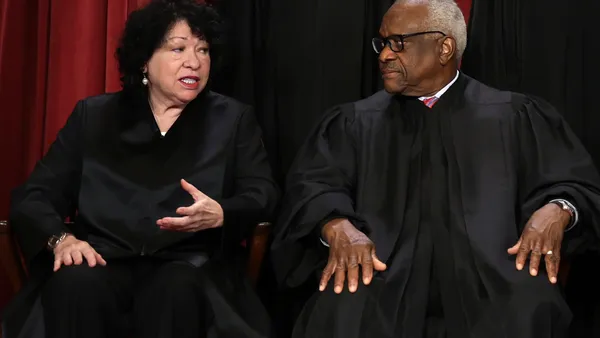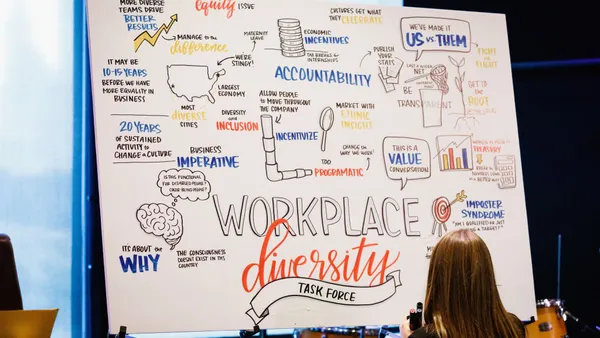Dive Brief:
- Starting in March 2018, the U.S. Equal Employment Opportunity Commission (EEOC) will collect summary employee pay data from certain employers, and the new data will improve investigations of possible pay discrimination, which remains a contributing factor to persistent wage gaps, according to the EEOC.
- The summary pay data will be added to the annual Employer Information Report (EEO-1 report) that is coordinated by the EEOC and the Department of Labor's Office of Federal Contract Compliance Programs (OFCCP). In response to public comments, the first deadline for the new 2017 EEO-1 report will be March 31, 2018, which gives employers 18 months to get their data in line.
- Private employers, including federal contractors and subcontractors with 100 or more employees, will report summary pay data. Federal contractors and subcontractors with 50-99 employees will not report summary pay data, but they will continue to report employees by job category as well as by sex, ethnicity and race as they do now. Employers with 99 or fewer employees and Federal contractors and subcontractors with 49 or fewer employees will not be required to complete the EEO-1 report.
Dive Insight:
Back in August, commentary surrounding the EEOC's proposed changes to the EEO-1 reportedly totaled about 600 comments, including a call by a trio of Republican senators to halt the proposal entirely.
"In Washington and around the country, policymakers are increasingly focusing on equal pay," says Ilyse Schuman, co-chair of the Workplace Policy Institute at Littler, the employment law firm. Schuman told HRDive that employers should anticipate that the EEOC will place increased attention on potential discriminatory pay practices as part of its broad-based systemic initiative, and this most likely will lead to expanded investigation of pay discrimination charges and related litigation.
Schuman says that with the final approval of the revisions to the EEO-1, employers need a clear understanding of the changes and must begin planning for their implementation. At the same time, employers need to understand the shifting landscape of state equal pay laws.












